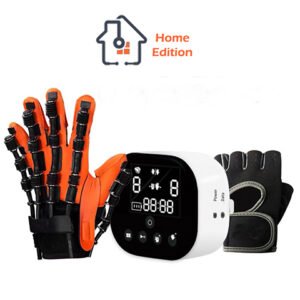Rehabilitation and Trigger Finger Issue
Trigger finger is a condition in which one of your fingers becomes caught in a bent posture (also known as stenosing tenosynovitis). With a snap, your finger may bend or straighten, similar to a trigger being pulled and released.
It happens when the area within the sheath that surrounds the injured finger’s tendon narrows due to inflammation. Your finger may become trapped in a bent posture if the trigger finger problem is severe.
Any finger, including the thumb, might be affected by trigger fingers. At any given time, more than one finger may be afflicted, and both hands may be involved. Triggering is most noticeable first thing in the morning, while holding an object firmly, or when straightening your finger.
The following are some of the signs and symptoms of trigger finger, which can range from minor to severe:
- Finger stiffness, especially first thing in the morning
- As you move your finger, you will feel a popping or clicking sensation.
- Tenderness or a lump (nodule) near the base of the affected finger in the palm
- Finger grabbing or locking in a bent posture, then abruptly straightening
- You can’t straighten your finger since it’s stuck in a bent position.
Physical therapy is believed to be one of the most effective and appropriate therapies for such problems, particularly after surgery.
Physical therapy is usually done in a hospital or clinical setting, but owing to the cutting-edge technology of the Rehabilitation Robot Gloves: SIFREHAB-1.1 and SIFREHAB-1.0, it can now be done at home.
These hand rehabilitation devices function in both flexion and extension to mobilize the trigger finger joints. Even if the patient has no active residual movement, passive mobilization can be used in the early stages of treatment. Fortunately, the software allows for a wide range of therapy customization options.
The Portable Rehabilitation Robotic Gloves: SIFREHAB-1.0 would magnify force in the direction the user tries to move to achieve the same goal (open or close his trigger finger).
The following home rehabilitation equipment can also give resistance in the opposite direction, which can aid in movement stabilization and hand muscle tone exercises. That is, the design could be used for a wide range of purposes and users, including individuals with stenosing tenosynovitis.
In sum, SIFREHAB-1.0 and SIFREHAB-1.1 provide low-cost, safe, intensive, and task-oriented rehabilitation through home therapy, which can improve treatment efficacy by including the recovery of daily-living-activity functions as well as a home environment adjustment.
To recap, a person with Trigger Finger Issue who follows an appropriate treatment plan may be able to improve his symptoms over time by performing hand therapy exercises at home with equipment such as the SIFREHAB-1.0 and SIFREHAB-1.1 Rehabilitation Robot Gloves.
Reference: stenosing tenosynovitis


